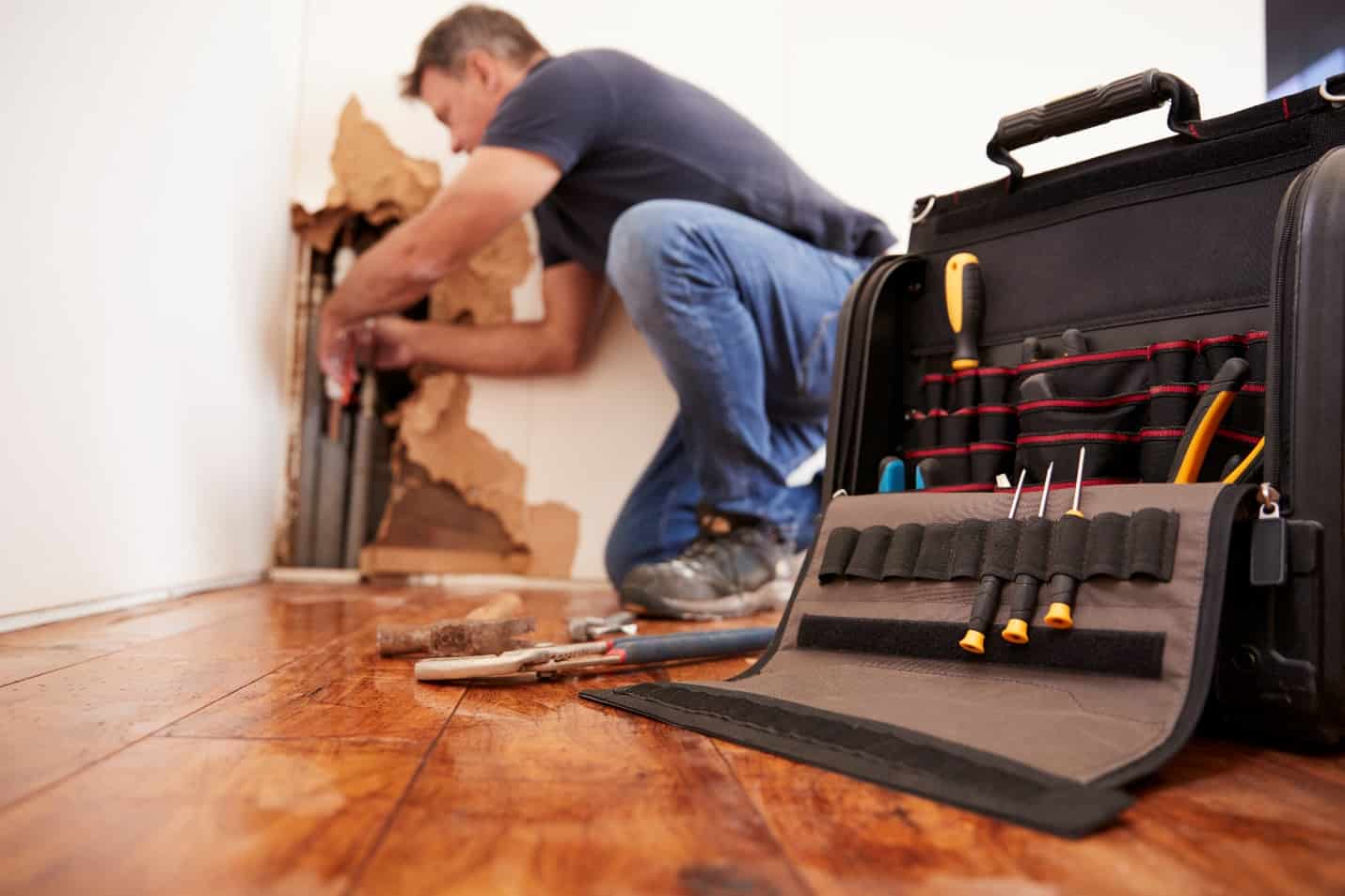Those dark stains on your walls or ceiling aren’t just an annoyance–they could be a sign of a bigger issue.
Today, let’s talk about what might be causing those unsightly brownish stains, what to do about them, and how to prevent them in the future.
What Causes the Water Stains on Ceilings and Walls?
There are a few reasons why you might be seeing water stains show up on your walls and ceilings. Unfortunately, none of them are great news.
Here’s what you need to know.
Plumbing Issues
Plumbing issues like a clogged drain, a leaky pipe, or a toilet that continuously overflows can all lead to water stains. When water comes into contact with the drywall in your home, it can quickly become discolored. If you notice any discoloration, check all of your visible pipes and plumbing, paying extra attention to those in adjoining rooms or directly above your water stains.
If you can’t find any obvious issues, it’s time to contact a professional plumber.

Roof Leaks
If there is nothing wrong with your plumbing, another common cause of water stains on your ceiling or walls is caused by a leak in your roof. A missing slate, a hole in the roof, or a piece of flashing that needs to be removed around your chimney stack can all let water leak in.
Check for any obvious signs of damage or wear, such as cracks, missing shingles, or faulty gutters. Water can be extremely pervasive. As soon as you identify a leak, it’s important that you take care of it right away.
Damaged Appliances
Damaged pipes or roof leaks aren’t the only causes of water stains on your ceiling and walls. If your HVAC system has components in the attic, or if your washing machine or dishwasher are faulty, this could be the source of the problem.
When you have parts and pieces of your plumbing system that you can’t see, it’s easy for these components to be out-of-sight, out-of-mind. If you notice stains near these appliances, it’s important to call a professional immediately.
It Pays to Pay for Preventative Maintenance!
Preventing water stains in the first place is easier and more cost-effective than repairing them. Enlisting the help of a professional to conduct regular inspections and routine maintenance is the best way to avoid water stains–and more serious water damage–to your home.
If you are concerned that you may have water damage somewhere in your home, call and speak to a member of the HELP team today.
Getting Rid of Water Stains: a How-to Guide
The only good news about water stains is that they aren’t permanent.
There are several ways to remove these unsightly stains from your ceiling and walls, however it’s important to only take this step once the leak has been fixed. Otherwise, not only will the water stain return, you’ll risk even more substantial damage.
Once the source of the problem has been identified and fixed, you can get rid of water stains in three simple steps:
Step #1: Grab a Bottle of Bleach
This DIY way to remove water stains can be done with a product you may already have sitting in a cupboard: bleach!
Mix one part bleach with three parts warm water and wipe over the stain. This method doesn’t just help ensure the paint and primer used to cover the stain sticks, it will also help get rid of any bacteria or mold that has grown around the area.
Remember: when it comes to bleach, safety first! Bleach is exceptionally caustic. Wear gloves and goggles when handling bleach and place an old sheet on your floor to protect your flooring from any drips.
Step #2: Opt for a Stain-Resistant Primer
After you’ve thoroughly prepared the area by adding a bit of bleach, it’s time to apply some primer. As tempting as it might be to just hit the area immediately with some paint, a good primer will help keep moisture from coming through a water-soluble interior paint.

Opt for a stain resistant oil-based primer for the best results.
Paint Over the Area
Once the primer has dried, it’s time to paint! If you’re only covering a small area, remember to try out several samples to ensure a color match with the rest of your wall or ceiling. If the area is large enough, consider giving the entire wall a fresh coat of paint.
If the water damage is extensive, covering up the stain with paint will not fix any weakness in your drywall. If the area where the water stain occurred is soft or has holes, the drywall likely needs patched or fully replaced.
Suspected Water Damage? Call for HELP!
Water stains on your ceiling are just the symptoms of a larger problem. If you spot water stains in your home, something more significant lies directly behind it.
If you suspect water damage in your home, call for HELP immediately. Call and speak with a member of our team and schedule a plumbing inspection today.


